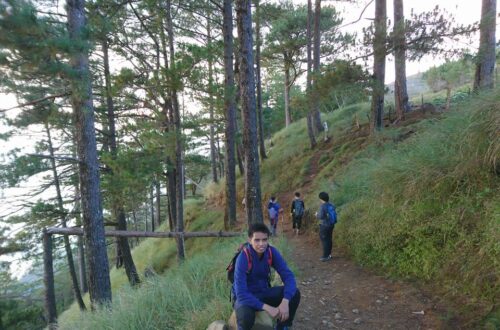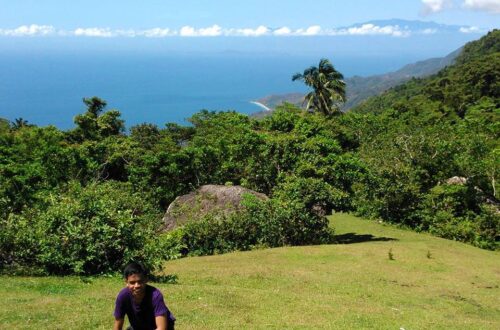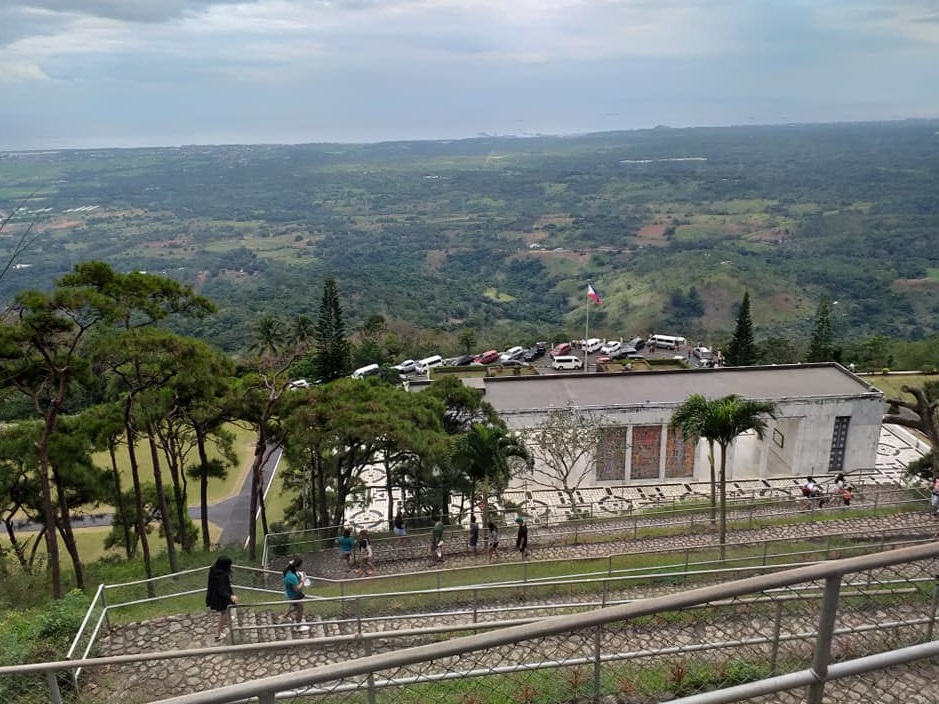
Mt. Samat National Shrine
Introduction
Mt. Samat is a historical mountain located in the town of Pilar in the province of Bataan. Bataan is known as the smallest province in the Central Luzon region and is steeped in history. It is where the well-known Shrine of Valor (Dambana ng Kagitingan) which is the second-highest cross in the world is located and it served as the monument of bravery and the home of heroes and saints. Mt. Samat is approximately seventy kilometers from Manila and it’s three to four hours away from the National Capital Region.
According to its famed history, Mt. Samat is the location where the bloodiest phase of the war between the Filipino-American soldiers against the Japanese army took place during the heights of the second world war. At the start of the war in the year 1942, the Filipino and American soldiers suffered great hardships in the battle against the Japanese invading forces. After three months of non-stop fighting, over seventy-eight thousand sick and starving American and Filipino soldiers of major general Edward King gathered in Bataan to bravely fight the Japanese soldiers. Mt. Samat served as their last refuge. Even so, on April 9, 1942 they surrendered to Japanese imperial army and most of the prisoners of war forced to walk from Bagac, Bataan all the way to Capas, Tarlac which is known as the Bataan Death March. As a result, thousands of Filipino and American prisoners of war died due to starvation and disease, extreme fatigue and exhaustion, others were shot on the spot, and beheaded.
Fast forward, Former President Ferdinand Marcos Sr. ordered the construction of Mt. Samat National Shrine in honor of the fallen Filipino and American soldiers who fought during the Battle of Bataan. The construction of the memorial cross began after the designation of Mt. Samat as a national shrine on April 14, 1966, and was completed and opened to the public in the year 1970 as part of the 25-year commemoration of the past war. The Mt. Samat Memorial Cross or Shrine of Valor stands at an elevation of 555 meters above sea level or 1820 feet which is made of reinforced steel and concrete and has a marble design.
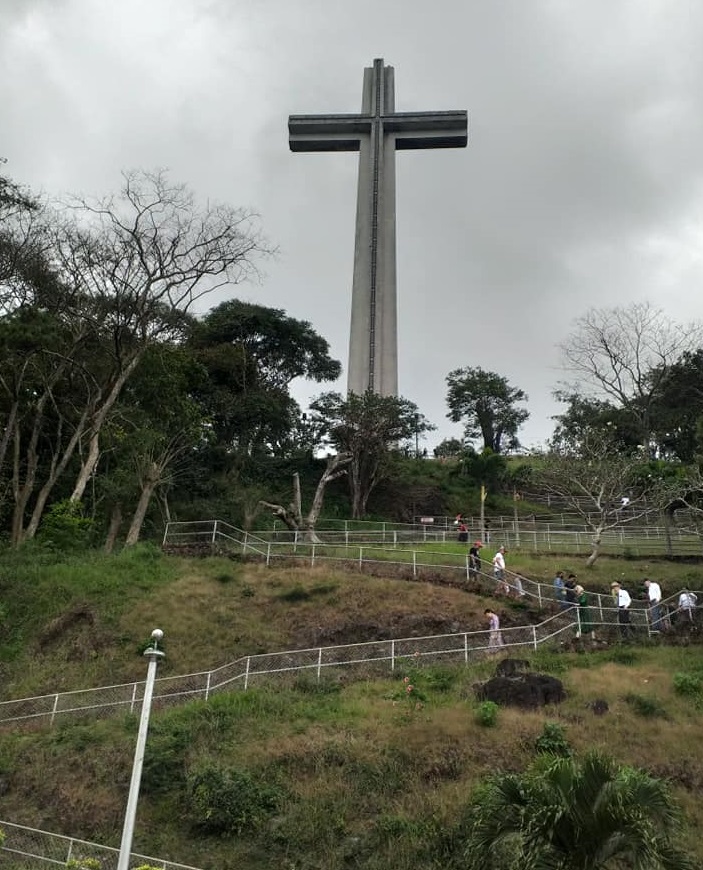
The Mt. Samat Memorial Cross has a height of 92 meters with arms of the cross that are 30 meters wide and it symbolizes the ninety-two-day fierce battle of the Filipino-American armed forces against the Japanese imperial army during the second world war. On its skin can be found the sculptural design made by national artist Napoleon Abueva titled “Nabiag na Bato” which depicts important historical events such as the death of our national hero Doctor Jose Rizal and the battle of Lapu-Lapu in the fifteenth-century.
In addition, the door at the Shrine of Valor was also made by Napoleon Abueva in collaboration with Maximo Vicente where there is an elevator inside that takes you to the hands of the cross. The giant memorial cross also features its viewing deck. From here, visitors can see from the shrine the vastness of the province of Bataan as well as the island of Corregidor and the skyline of Metro Manila in clear weather.
At the bottom of the Mt. Samat Memorial Cross, there is a colonnade which is an extraordinary structure made of marble in the center of which is an altar, and behind the altar are three stained glass murals designed by Cenon Rivera and made by the Italian Vetrate D’arte Giuliani. The engraved history of the past war can also be seen on its wall. There are 19 sculptures by Napoleon Abueva that can be found outside the colonnade. On its front side is the towering flag of the Philippines.
Presently during the second week of April, many Filipinos celebrate the Day of Valor also known as the Fall of Bataan in tribute to the sacrifices of Filipino and American soldiers during the Battle of Bataan in the year 1942. So if you want to see with your own eyes the shrine of bravery, remember the fallen Filipino and American soldiers during world war two and know more about our history, then go to Mt. Samat as soon as you can. It’s a must visit tourist attraction once in your lifetime.

Name: Mt. Samat
Location: Pilar, Bataan, Philippines
Features: World War 2 landmark, Shrine of Valor and marvelous view of Bataan province
My trip to Mt. Samat
In the past few days, I want to know the significance of the shrine of valor in Mt. Samat. So one day I decided to join a well-coordinated tour with a side trip to Mt. Samat. It was Sunday afternoon after our Las Casas Filipinas de Acuzar day tour trip ended around 1:55 pm, our group decided to go to Mt. Samat because it’s only twenty kilometers away from Las Casas.
In the initial portion of the road going to Mt. Samat I feel like I’m having a road trip to Kaybiang Tunnel because of the well paved road and greeny views with lot of trees along the way. In addition, I can even see from distance the imposing memorial cross because of its high designation. Then in the middle and latter part of our road trip, we see lots of bikers and motorcycles going up to Mt. Samat also even though the road is super steeped, curved and zigzag. We reach the registration point of Mt. Samat National Shrine around 2:40 pm.
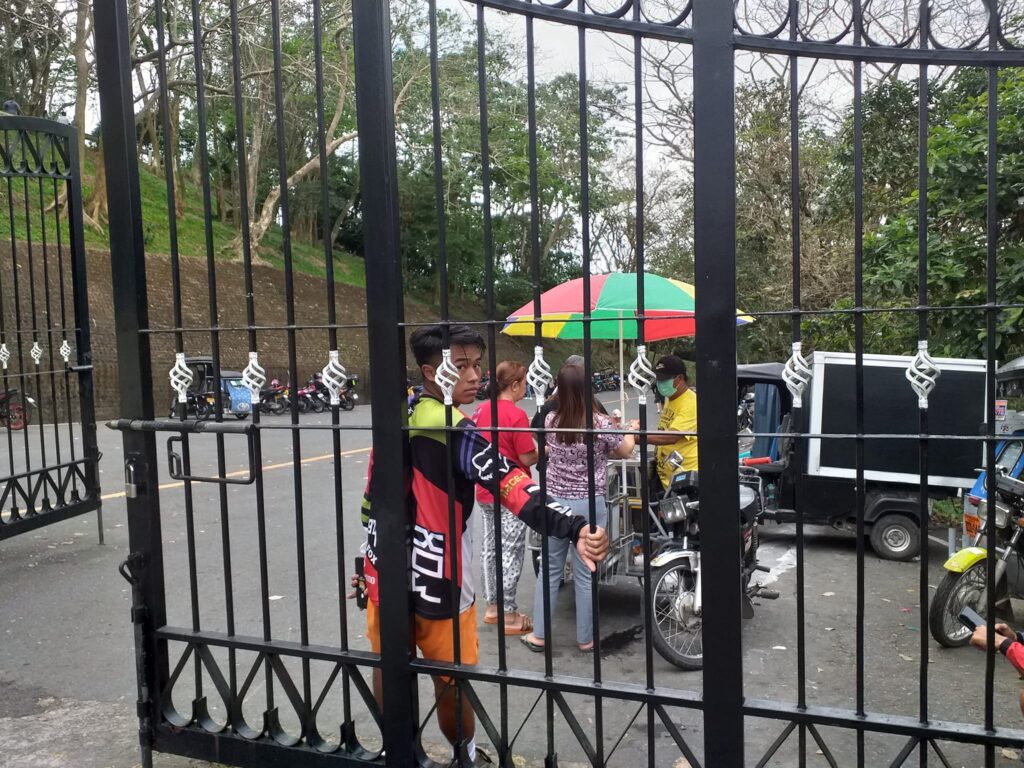
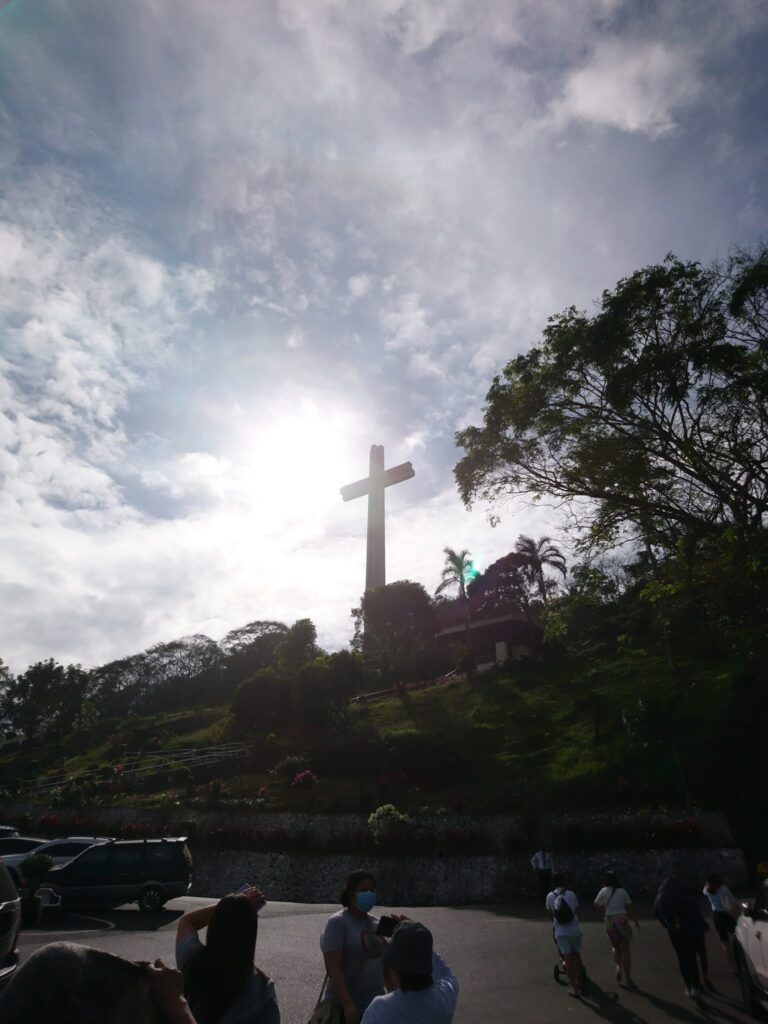
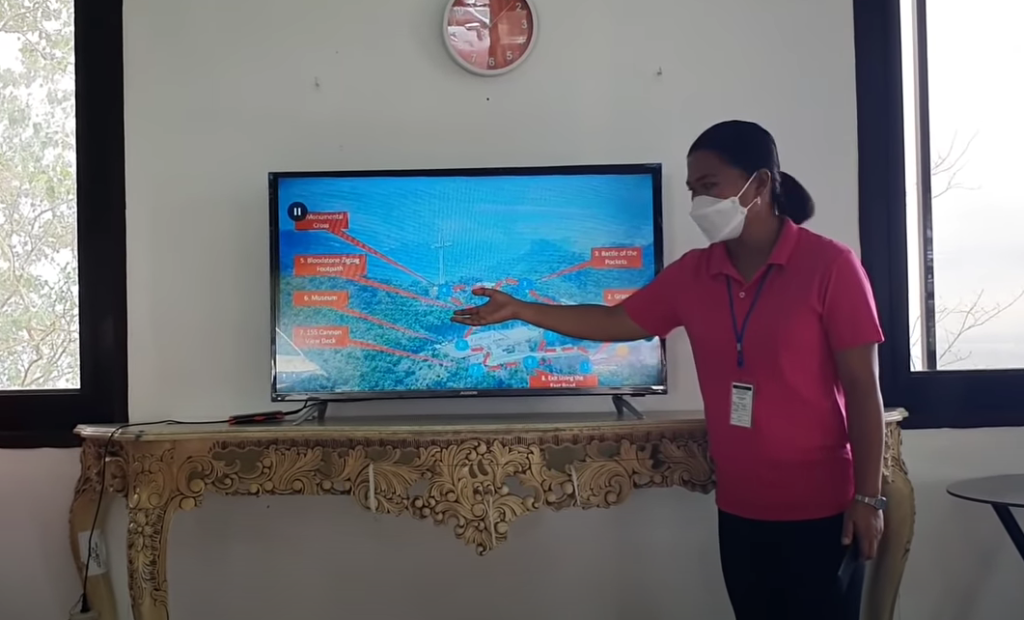
Then I noticed that the place is crowded maybe because it’s weekend and the place is so popular to locals and international tourist. After our group paid the entrance fee at the gate, we have a short orientation about the Mt. Samat National Shrine. It was around 3 pm when our group start walking towards the base section of the memorial cross.
The trail is steep, its a constantly uphill climb and we have to stop several times to rest, take pictures and simply enjoy the view. We reach the base of Mt. Samat memorial cross after seventeen minutes of trekking. It was an achievement for us. Moreover, it’s a very humbling nostalgic experience to stand near the memorial cross because of it’s significance to our history.
Freedom is a dream that we have achieved in the past seven decades, torture, cruelty, and contempt, experiences that served as water for the thirsty flower. Courage, peace, and unity, served as a guide to achieving the desired request. Then I asked myself, What is the true symbol of our freedom? What exactly is the symbol of bravery? Although it relives the hardship suffered by Filipino-American veterans at the hands of the Japanese during the second world war. The shrine of bravery will serve as a mark, a reminder to us and the next generation of how brave the Filipino people are.
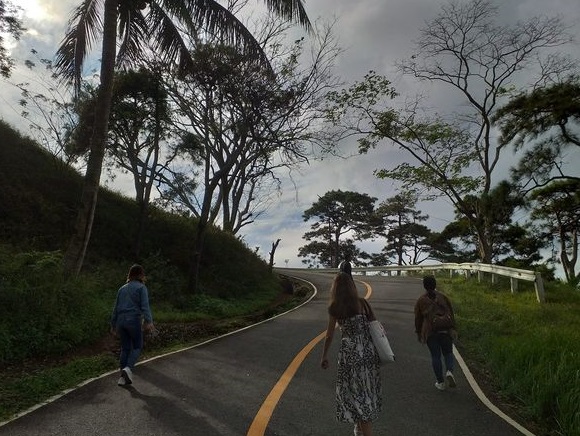
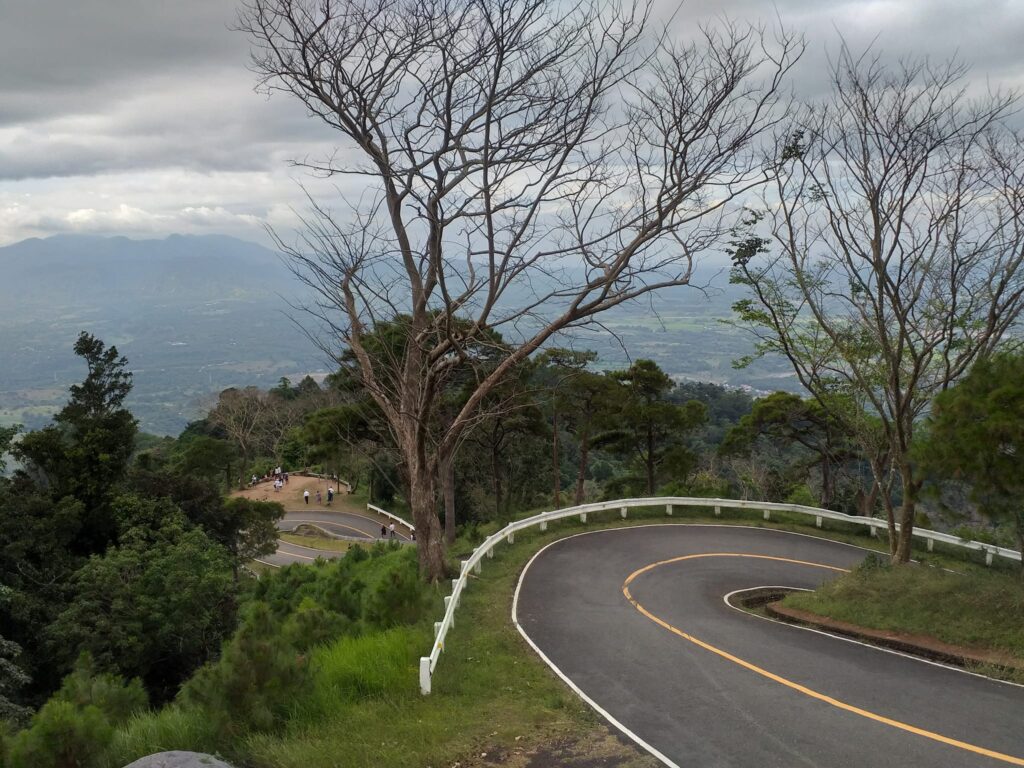
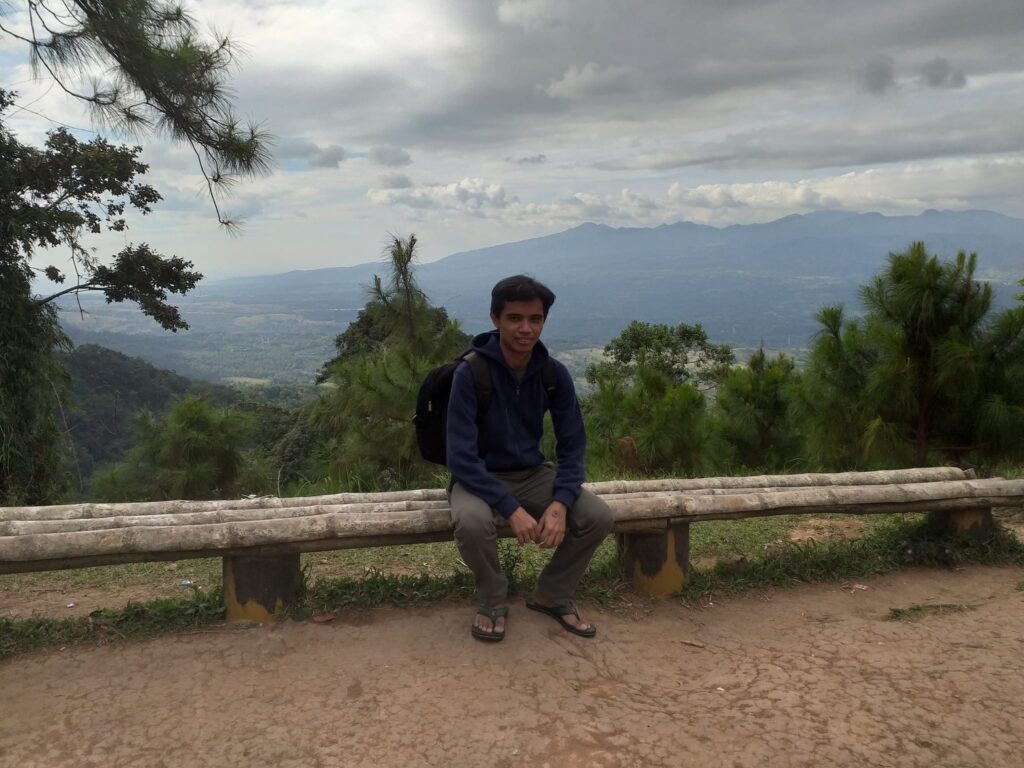
We enjoy the fresh air from above and the panoramic 360 degree view of the Bataan peninsula. According to my research, Mt. Samat National Shrine has the same height of Statue of Liberty in New York City from ground level to torch. Without a doubt, it’s a truly a one of a kind monument and I’m very proud that I’m a Filipino. I can’t help but shed tears because of the way they fought for our freedom, their sacrifices and heroic struggle in the past.

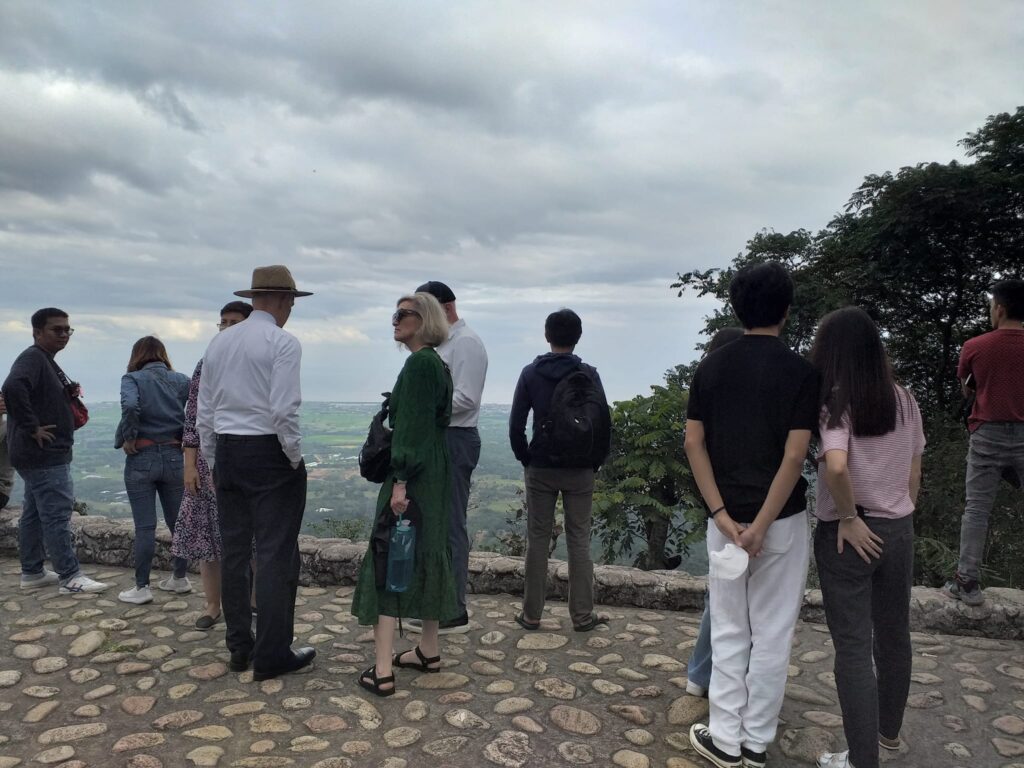
Then I saw many Americans also pay respect and remember their courage acts during the devastating war. We stayed at the base of Mt. Samat National Shrine for nearly twenty minutes. After that we go down and headed towards the memorial shrine complex and saw the carved stone wall panel on each opposite side that tell the chronicles of the string of battles that take place in Mt. Samat. The words that stuck with me most from the carved tablet are this saying “Let friend and foe recognize the martial spirit that defeat could not break, to the memory of these brave warriors whose blood soaked every rock of this land so that this nation might endure, this humble shrine is consecrated. Our mission is to remember”. Undoubtedly, I feel such goodwill and deep heartfelt respect for all the Filipino and American people who fought and choose to die rather than surrender.
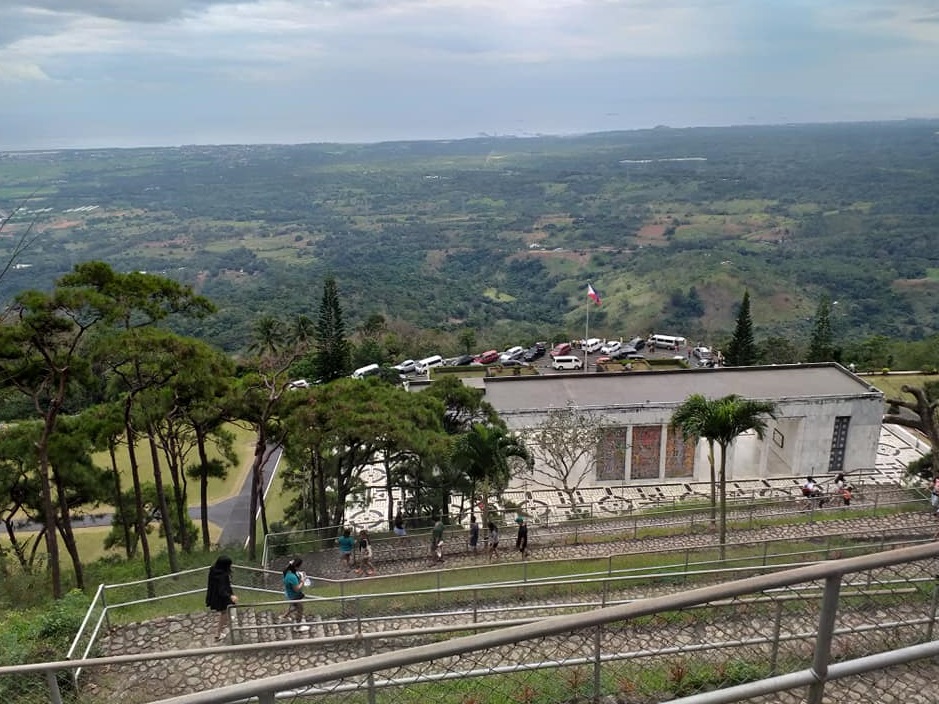
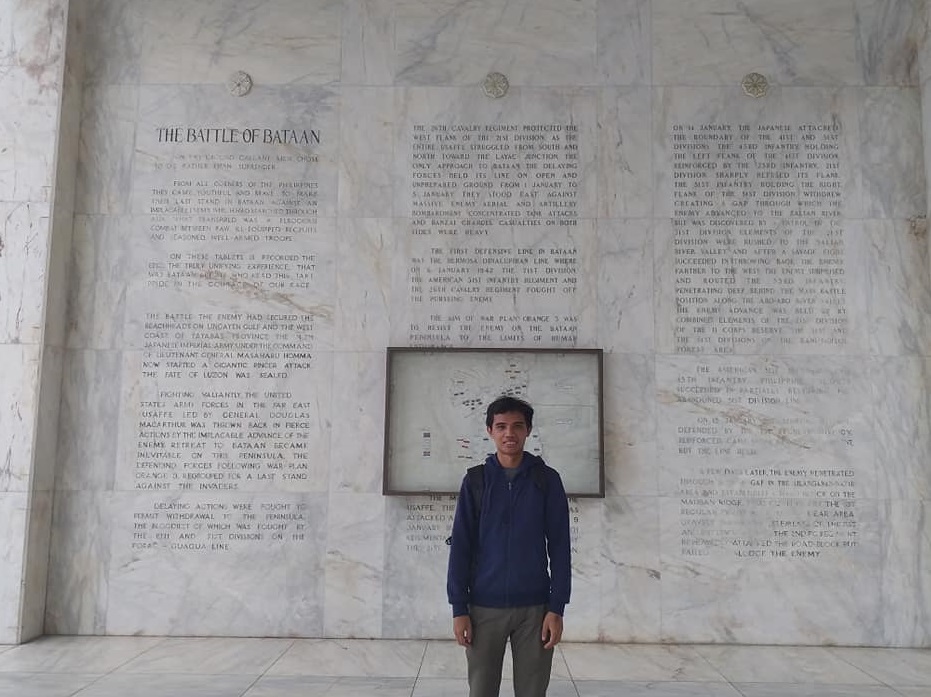
For a moment we take several pictures at the memorial shrine complex and then we go inside the war museum. Inside the museum, we saw a vast array of collection from paintings and items that tell some significant stories and battles that take place in the Philippines during the second world war. For this reason, we stay at the museum for nearly thirteen minutes to read stories and marvel.
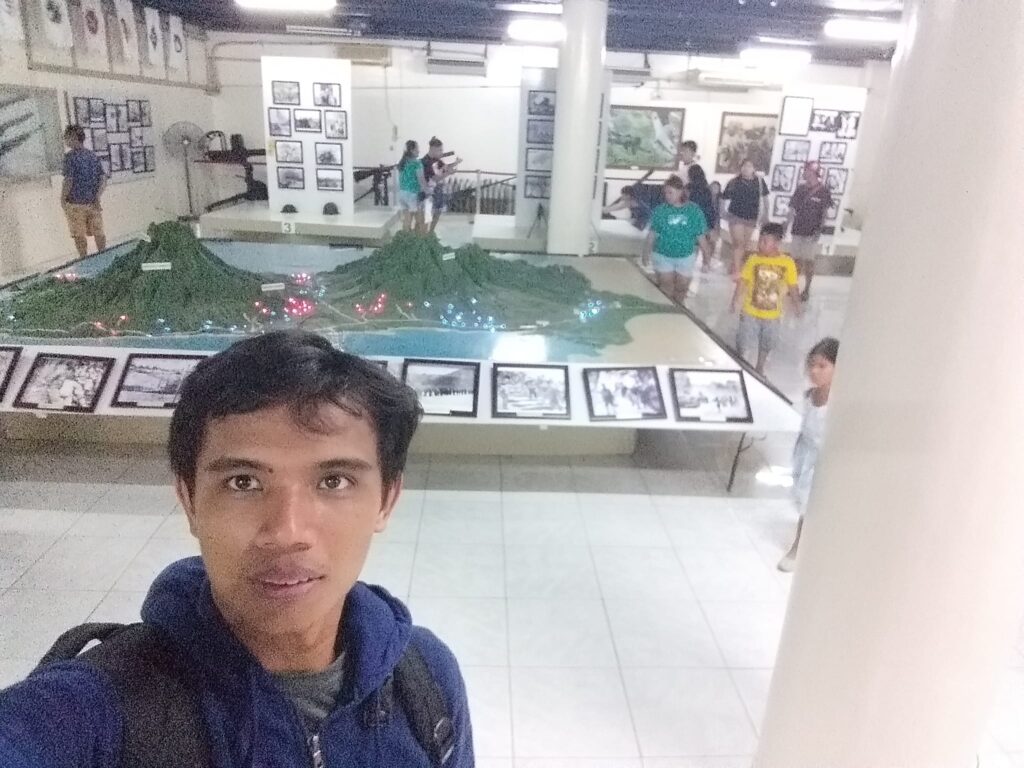
Afterward we go outside the museum and we enjoy the refreshingly cold air and extraordinary view at the Mt. Samat National Shrine complex. At the ground below I can see the huge long cannon that was used during the Battle of Bataan and as I continue to look around I can see the surrounding hills and mountains. For this reason, I can really feel the terrain and what the actual battle was like.
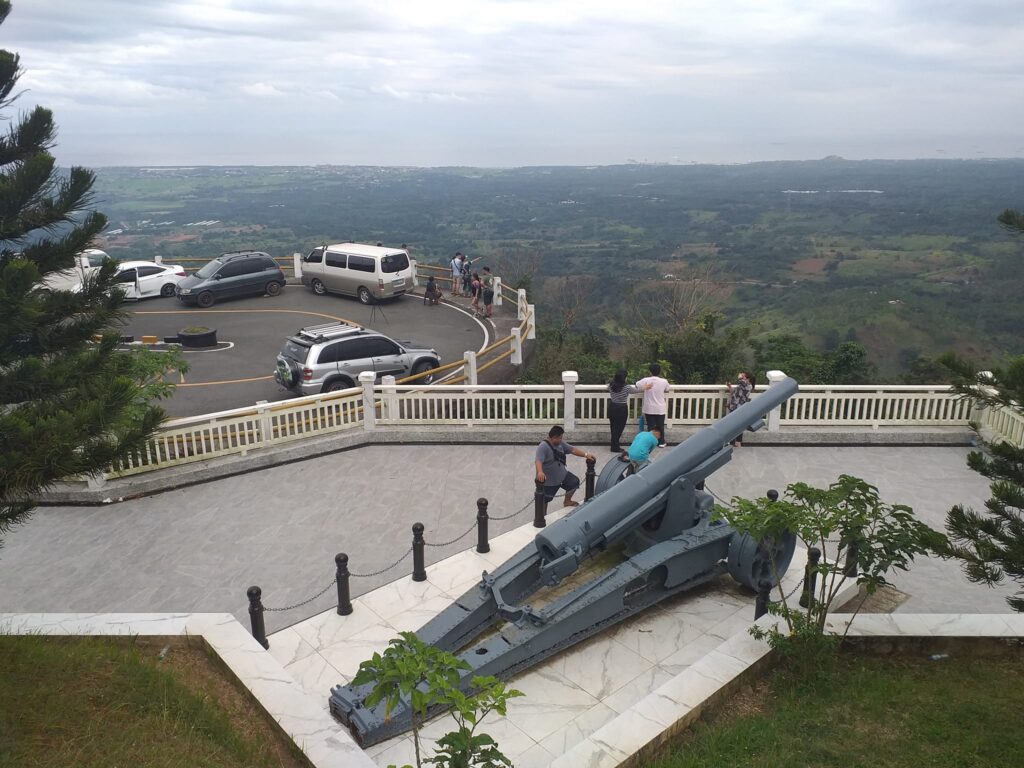
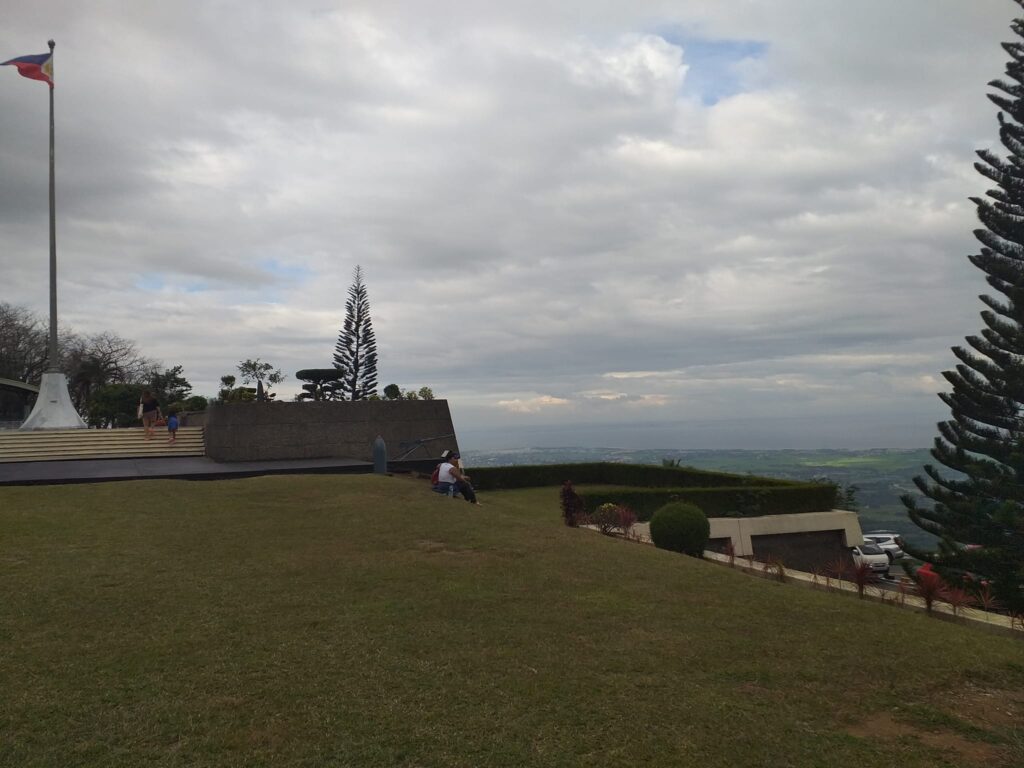
We leave Mt. Samat past 4 pm and and I feel the joy because I know God has a perfect timing to enjoy every moment just like this. While we were on the way going back to Metro Manila I can still see with my own two eyes the Memorial Cross of Mt. Samat and the immense Mt. Mariveles from distance. We arrived at EDSA-Guadalupe in Makati City around 7:40 pm. Thanks be to God for guiding us throughout.
How to Go to Mt. Samat
By commute
- From Cubao bus terminal in Quezon City, ride a bus bound to Balanga, Bataan.
- At the city of Balanga, ride a jeep with a signage of Bagac or Cabog-Cabog and tell the jeepney driver to alight you at the road or starting point of Mt. Samat which is located at Barangay Diwa in the municipality of Pilar. Note: It is after the Death March Marker (KM19).
- Then ride a tricycle that will take you up to the Mt. Samat National Shrine entrance gate.
By private car
- Open your navigation app on your mobile phone and pin Mt. Samat Stage or Mt. Samat Cross.
- From Metro Manila, take the Northern Luzon Expressway (NLEX) and exit to San Fernando City in Pampanga.
- Then proceed to Jose Abad Santos Avenue which will pass through the municipality of Guagua and Lubao. Continue driving to the Roman Superhighway or Bataan Provincial Highway. Later when you reach an intersection in Pilar, turn right onto Gov. J.J. Linao National Road and later turn left at Mt. Samat Road going to Mt. Samat Stage.
Reminders and Tips:
- As of 2023 the registration fee in Mt. Samat is 30 pesos per head which include the visit to museum. After you’ve done the registration you are required to attend the brief orientation about this historical place and the things that are not allowed to do before exploring the Shrine of Valor.
- The Mt. Samat National Shrine is open for all visitors from 8 am up to 5 pm everyday.
- It is strictly forbidden to fly camera drones during your visit. If you want to fly your drone you need a permit from the officials and CAAP certificate.
- There are stores at the main entrance gate that sell light snacks, refreshments and souvenirs such as mugs, t-shirt, pouch bag and caps.
- There are clean restroom at the base of Mt. Samat National Shrine.
- From Bagac Bataan, you can reach Mt. Samat in between thirty to forty minutes by using a motorcycle.
- If its rainy season, assure to drive meticulously as the road going to the top of Mt. Samat is full of zigzag and big curve. Ride at your own risk.
- Above all, appreciate and respect the historical place.
There you have it history lover. There’s nothing like the joy of waking up to another day and knowing that at this age, there’s still a whole life of adventures. All in all, I desire that this Mt. Samat blog has been accommodating to you and encouraged you to visit this place someday. God bless us all and have a pleasant day to you.



